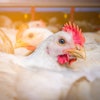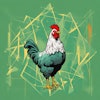The emergence of corn seedlings across the Midwest and the basketball and hockey playoffs remind us that it is time to prepare for the onset of hot weather which can adversely affect egg production and quality.
Items which should be considered include:
- Confirming that curtain release installations on open-sided houses operate correctly.
- Testing evaporative cooling pad systems and high pressure nozzle installations for correct function. Pads and nozzles should be cleaned and all piping, connectors, pumps and the electrical supply to thermostats and solenoids should be checked.
- Emergency generators should be run under load for at least 15 minutes at one or two week intervals. Adequate supplies of diesel should be held to allow operation in the event of a 48-hour outage following lighting strikes on transformers or other climatic events which interrupt power from a grid.
- In controlled environment houses, thermostats, fans, control modules and emergency alarms should be examined for defects which could result in high mortality in the event of failure of the ventilation system.
Adjust feed and water intake
Dietary formulations should be adjusted to compensate for decrease feed intake in both rearing pullets and hens. Special attention should be paid to the energy content of the diet including supplementation with ingredients with high energy density such as animal fat or by-product meals.
During hot weather:
- Critical amino acids including methionine and lysine should be evaluated on the basis of feed intake and egg mass.
- Mineral levels should be specified in relation to feed intake and production level. Nutrient specifications should be guided by breeders' recommendations.
- Half the calcium requirement should be in the form of coarse limestone which promotes absorption during the six to eight hours of darkness when mineral deposition in shells occurs at a high rate.
- Calcium and phosphorus levels should be balanced and supplementary Vitamin D3 should be considered based on shell quality in older flocks.
- Increasing the frequency of operation of feeder systems will encourage feed intake. In the case of suboptimal consumption due to high temperatures during daylight hours, a "midnight feed" of approximately 30 minutes duration can be considered providing that there is at least 3 hours darkness on either side of the feed cycle.
Monitor water intake
Water intake should be carefully monitored as hens require additional water for evaporative cooling which is the principal mode of heat loss when house temperatures exceed 80 F.
If water temperature in supply piping exceeds 60 F the lines should be flushed at frequent intervals to reduce temperature at the nipples to promote consumption.
Limited evidence shows that supplementing drinking water with electrolytes or adding vitamin C to diets has a positive benefit to cost ratio in the context of commercial U.S. production. Experimental data has been published supporting the use of these additives.


















